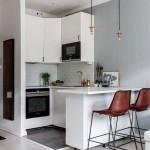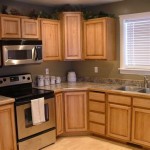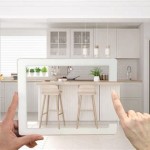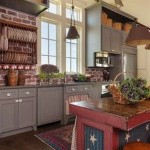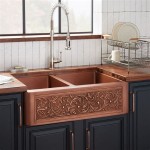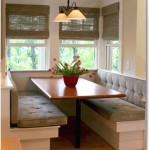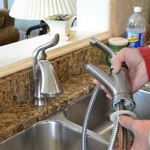Can You Mix Knobs and Pulls In A Kitchen? A Comprehensive Guide
The question of whether to mix knobs and pulls in a kitchen is a common one during renovation or design projects. The answer, while seemingly simple, is nuanced and depends heavily on several factors. Considerations range from the overall aesthetic goal, the kitchen's functionality, and the specific style of the cabinetry. Mixing hardware isn't inherently wrong, but careful planning and execution are essential to achieve a cohesive and stylish result.
Hardware, often considered the "jewelry" of the kitchen, significantly contributes to the overall appearance and feel. It provides not only functional utility for opening and closing cabinets and drawers but also adds a decorative element that can complement or contrast with the cabinetry, countertops, and backsplash. Therefore, the decision of whether to use knobs, pulls, or a combination thereof should not be taken lightly.
Functionality and Ergonomics
One of the primary drivers behind the decision to mix knobs and pulls should be functionality. Different types of cabinets and drawers may benefit from different types of hardware. For instance, larger, heavier drawers typically require pulls for ease of use. The larger surface area of a pull allows for a more comfortable and secure grip, particularly when the drawer is fully loaded. This can reduce strain and improve the overall usability of the kitchen.
Conversely, smaller cabinets or those used less frequently might be perfectly suited for knobs. Knobs generally require less effort to install and often present a more subtle aesthetic. Furthermore, for cabinets where the primary function is simply to open and close without requiring heavy lifting or frequent access, knobs can provide a cost-effective and aesthetically pleasing solution.
The ergonomics of kitchen hardware are also crucial. Consider the target user's strength and grip. For individuals with limited hand strength or mobility issues, pulls may be a better choice for all cabinets and drawers due to their ease of use. Conversely, for individuals who prefer a minimalist design and find knobs comfortable to use, they can be incorporated thoughtfully throughout the kitchen.
Ultimately, assessing the function of each cabinet and drawer individually informs the best hardware choice. A practical approach prioritizes ease of use and accessibility, ensuring that the hardware enhances the kitchen's daily functionality.
Achieving a Cohesive Aesthetic
Mixing knobs and pulls can create visual interest and introduce a customized design element to the kitchen. However, maintaining a cohesive aesthetic is paramount. Various strategies can be employed to ensure the hardware selections work harmoniously together.
One approach is to maintain consistency in finish. Regardless of whether a knob or pull is used, selecting a consistent finish, such as brushed nickel, polished chrome, or matte black, unifies the design. This creates a sense of visual order and prevents the hardware from appearing disjointed or haphazard.
Another strategy is to leverage the shape and style of the hardware. Even if mixing knobs and pulls, look for elements that tie them together, such as similar detailing, profiles, or design motifs. For example, pairing a round knob with a subtly rounded pull can create a visual connection that reinforces the overall design theme.
Consider the kitchen's overall design style. In a traditional kitchen, pairing ornate knobs with classic cup pulls can enhance the traditional aesthetic. In a modern kitchen, sleek, minimalist knobs can be used on upper cabinets while long, linear pulls adorn lower drawers, creating a contemporary juxtaposition.
Scale is another critical factor. The size of the hardware should be proportionate to the size of the cabinet or drawer. Overly large hardware on small cabinets can appear overwhelming, while undersized hardware on large drawers can look inadequate. Carefully measure and select hardware that complements the scale of the cabinetry.
Placement and Practical Considerations
Strategic placement of knobs and pulls is crucial for both aesthetic appeal and functional efficiency. Poorly placed hardware can detract from the overall design and make the kitchen less user-friendly.
A common practice is to use knobs on upper cabinets and pulls on lower drawers and cabinets. This approach often aligns with functional considerations, as lower drawers typically require more leverage for opening. It also creates a visual distinction between upper and lower cabinetry, which can add depth and dimension to the kitchen.
Alternately, some designs opt for pulls on all drawers and knobs on all cabinets. This offers strong visual consistency and also reinforces a design style. This will often be considered in more modern or minimalist design approaches.
Another placement strategy involves using pulls on all frequently used drawers and cabinets, regardless of their location. This prioritizes ease of use and accessibility for the most commonly accessed storage areas. Knobs can then be used on less frequently accessed cabinets, such as those storing seasonal items or less-used appliances.
When installing hardware, pay close attention to alignment and spacing. Use a template or guide to ensure that all hardware is installed at the same height and distance from the cabinet or drawer edge. This creates a clean, professional look and prevents the hardware from appearing misaligned or haphazard.
Consider the door style. On shaker-style cabinets, for example, pulls are often centered on the stiles (the vertical frame pieces) of the cabinet doors. On slab-front cabinets, the placement can be more flexible, but typically hardware is positioned horizontally or vertically along the center of the door.
Finally, before committing to a hardware selection, test out different configurations. Hold the hardware up to the cabinets and drawers to visualize the final result. Consider temporarily attaching the hardware with adhesive putty to evaluate its appearance and functionality before drilling any holes.
The decision to mix knobs and pulls in a kitchen is ultimately a matter of personal preference and design sensibility. By carefully considering functionality, aesthetics, and placement, it is possible to create a kitchen that is both beautiful and highly functional. The key is to approach the decision thoughtfully and deliberately, paying attention to the details that contribute to a cohesive and harmonious design.
The interplay of different types of hardware can infuse personality and style into the space. When executed effectively, the mix can enhance the overall aesthetic appeal of the kitchen, transforming it into a bespoke and personalized haven.

How To Mix Kitchen Cabinet Hardware Decor

How To Get Your Kitchen Cabinet Hardware Right Houzz

How To Mix Kitchen Cabinet Hardware Knobs And Pulls Porch Daydreamer

3 Quick Tips For Mixing Knobs Pulls On Kitchen Cabinets

How To Mix And Match Cabinet Hardware Sprucing Up Mamahood

How To Create A Custom Looking Kitchen Mixing Hardware Styles

How To Mix Kitchen Cabinet Hardware Knobs And Pulls Porch Daydreamer

Mixing And Matching Knobs Pulls On Kitchen Hardware Van Dyke S Rers

How To Mix And Match Cabinet Hardware Sprucing Up Mamahood

How To Mix Match Kitchen Hardware Finishes Styles The Inspired Room
Related Posts


